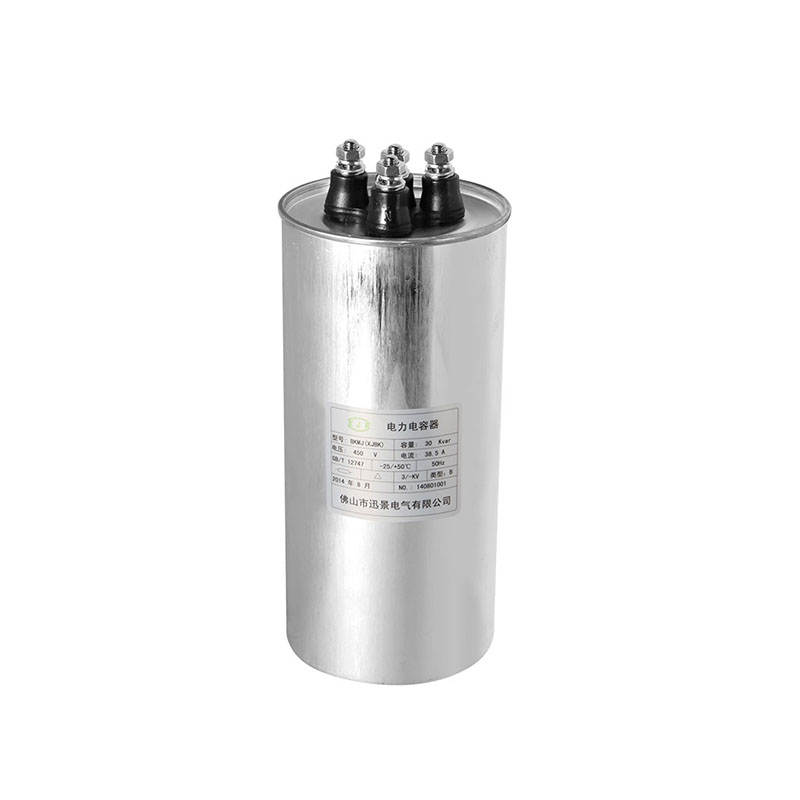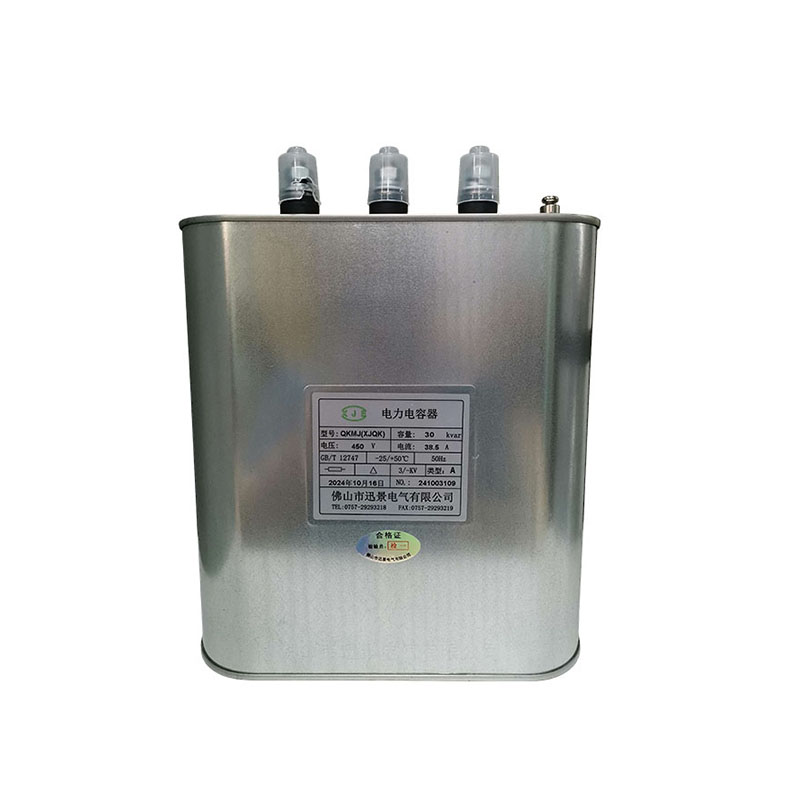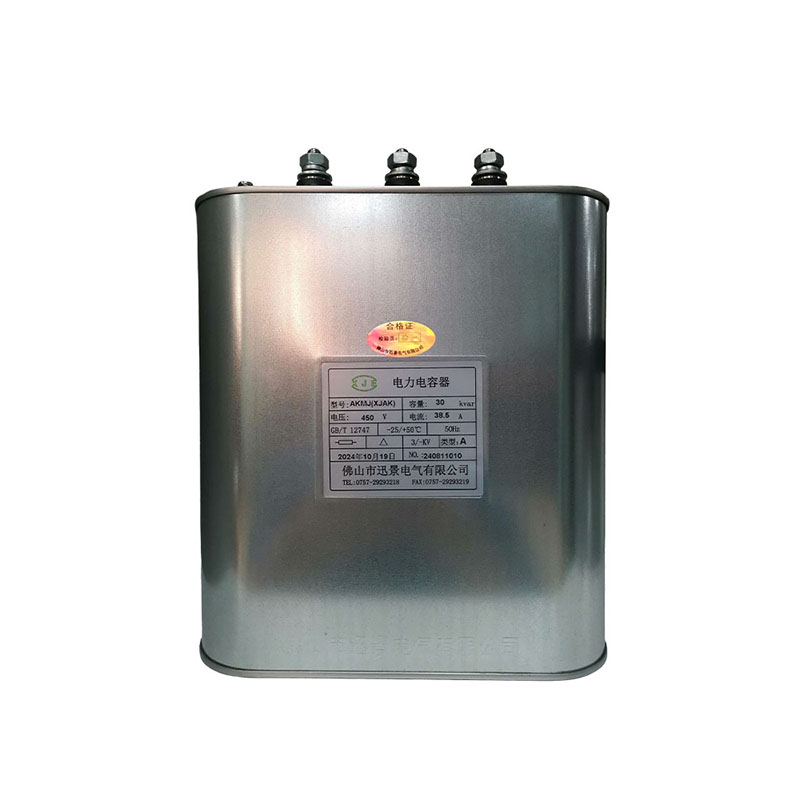How does the self-healing low voltage shunt capacitor perform in terms of durability?
Release Time : 2025-04-10
The performance of the self-healing low voltage shunt capacitor in terms of durability is undoubtedly a commendable highlight in the power system. With its unique self-healing characteristics and high-quality material selection, this capacitor has demonstrated excellent durability and provided a strong guarantee for the long-term stable operation of the power system.
The reason why the self-healing low voltage shunt capacitor performs well in durability is firstly due to its unique self-healing mechanism. When a small breakdown occurs inside the capacitor, the metallized film inside it can react quickly, forming an insulating recovery area by locally melting and evaporating the material at the breakdown site. This process not only prevents the further spread of the fault, but also enables the capacitor to return to normal working state in a short time. This self-healing ability greatly reduces the possibility of capacitor failure due to internal faults, thereby extending its service life.
In addition to the self-healing characteristics, the self-healing low voltage shunt capacitor also uses high-quality materials to enhance its durability. Polypropylene film is usually used as a dielectric inside the capacitor. This material has extremely high withstand voltage strength and low loss characteristics. The polypropylene film not only has good insulation properties, but also can maintain stable performance under high temperature and high pressure environments, thus ensuring the long-term stable operation of the capacitor.
In addition, the structural design of the self-healing low voltage shunt capacitor also fully considers durability. The capacitor adopts a compact and reasonable layout inside, reducing unnecessary space waste and potential failure points. At the same time, the capacitor shell adopts strong and durable materials and is effectively sealed to prevent erosion and interference from the external environment.
In practical applications, the durability of the self-healing low voltage shunt capacitor has been widely verified. Whether in harsh industrial environments or in extremely demanding power systems, this capacitor can maintain stable performance and withstand long-term tests. Many user feedbacks show that the service life of the self-healing low voltage shunt capacitor far exceeds that of traditional capacitors, and in some cases can even reach more than ten years or even longer.
The self-healing low voltage shunt capacitor is excellent in durability. Its unique self-healing mechanism, high-quality material selection and reasonable structural design together constitute its excellent durability. This capacitor not only provides a strong guarantee for the stable operation of the power system, but also brings lower maintenance costs and higher economic benefits to users. In the future development, self-healing low voltage shunt capacitor will continue to play its durability advantage and make greater contributions to the progress and development of the power industry.
The reason why the self-healing low voltage shunt capacitor performs well in durability is firstly due to its unique self-healing mechanism. When a small breakdown occurs inside the capacitor, the metallized film inside it can react quickly, forming an insulating recovery area by locally melting and evaporating the material at the breakdown site. This process not only prevents the further spread of the fault, but also enables the capacitor to return to normal working state in a short time. This self-healing ability greatly reduces the possibility of capacitor failure due to internal faults, thereby extending its service life.
In addition to the self-healing characteristics, the self-healing low voltage shunt capacitor also uses high-quality materials to enhance its durability. Polypropylene film is usually used as a dielectric inside the capacitor. This material has extremely high withstand voltage strength and low loss characteristics. The polypropylene film not only has good insulation properties, but also can maintain stable performance under high temperature and high pressure environments, thus ensuring the long-term stable operation of the capacitor.
In addition, the structural design of the self-healing low voltage shunt capacitor also fully considers durability. The capacitor adopts a compact and reasonable layout inside, reducing unnecessary space waste and potential failure points. At the same time, the capacitor shell adopts strong and durable materials and is effectively sealed to prevent erosion and interference from the external environment.
In practical applications, the durability of the self-healing low voltage shunt capacitor has been widely verified. Whether in harsh industrial environments or in extremely demanding power systems, this capacitor can maintain stable performance and withstand long-term tests. Many user feedbacks show that the service life of the self-healing low voltage shunt capacitor far exceeds that of traditional capacitors, and in some cases can even reach more than ten years or even longer.
The self-healing low voltage shunt capacitor is excellent in durability. Its unique self-healing mechanism, high-quality material selection and reasonable structural design together constitute its excellent durability. This capacitor not only provides a strong guarantee for the stable operation of the power system, but also brings lower maintenance costs and higher economic benefits to users. In the future development, self-healing low voltage shunt capacitor will continue to play its durability advantage and make greater contributions to the progress and development of the power industry.







